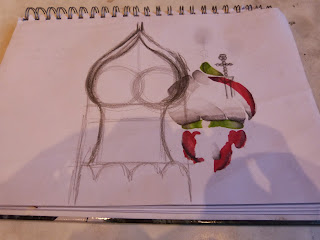So after cycling and exploring round Manchester for a couple of days I have decided to base my project on square 102/103 of the 'A-Z Manchester' map. This is mainly in Ardwick along the Piccadilly train tracks that runs adjacent to the village. The area is heavley indutrialised with catacomb like structures surrounding and in the bridge of the railway.
I was first drawn to this place because it embodied the soul of Manchester; its history, its foundation and its strength. Its also a limbo-like location. This is where the city begins to change from a bustling, metropolitan full of people to the rolling hills and wilderness of the countryside. In the middle of these opposing environments is a sort of no-mans land; mostly places of work with spats of greenery in places which have been turned grey and unhealthy by industrialisation. Its an ugly place but we need it for the city to thrive, so is it a good thing?
Despite its looks, its an integral part of the city; because its an integral part of the city its ruined the land and looks ugly. I think this is a good question to keep in mind while progressing through the project. I will try and establish the need for this place and its limbo qualities by photographing it in a different light. Looking at photographers like The Bechers, Mark Power, Ed Ruscha and John Davies that photograph industrial sites in a beautiful way, I will try and make images that reflect classic landscapes from Ansel Adams and paintings. In this way I will portray the idea of limbo between these two states. I will also take inspiration from Alec Soth's 'Sleeping by the Missippi' project by following the train tracks and documenting alongside it.
Hopefully these aims combined I will be left with images that resemble classic landscape paintings but ones that show twisted metal, waste, factories and concrete. I don't want to pour an opinion on whether this is good or not, rather be neutral and force the viewer to ask it themselves. For this aim I will photograph in a deadpan style like that of Andreas Gursky.
.jpg)






















































